– Welcome everyone to Wednesday Nite @ the Lab. I’m Tom Zinnen. I work here at the UW-Madison Biotechnology Center. I also work for the Division of Extension here at UW-Madison, and on behalf of those folks and our other co-organizers, Wisconsin Public Television, Wisconsin Alumni Association, and the UW-Madison Science Alliance, thanks again for coming to Wednesday Nite @ the Lab. We do this every Wednesday night, 50 times a year. Tonight, it’s my pleasure to introduce to you Rock Mackie. He’s the chief innovation officer at UW-Health, and is a professor emeritus in the departments of Engineering Physics and Medical Physics. He was born in Eston, Saskatchewan, in the Prairie Provinces, and went to high school in Saskatoon. And then he got his undergraduate degree in physics at the University of Saskatchewan and then moved a little bit west to go to the University of Alberta, where he got his PhD in physics. Then he came here to UW-Madison in 1987 to be in the Department of Medical Physics.
And then in 2010 to 2015, he moved over to the Morgridge Institute for Research, and he retired, and then earlier this year, he got pulled out of retirement to become the chief innovation officer at UW Health. Tonight, he’s going to talk with us about something that’s distinguishing here at this university and at many other places, fueling academic entrepreneurship. We’ve had talks on, great historic talks, on Steinbach and vitamin D, and Karl Paul Link and warfarin. Tonight we get to hear about how this ship of enterprise sails in today’s seas. So please join me in welcoming Rock Mackie to Wednesday Nite @ the Lab. (audience applauding)
– Thank you very much. Thank you, Thomas, it’s a pleasure to be here. This is a great program, and I’m honored to be here talking to you. I’d like to start by dedicating this to a good friend, Mark Cook. Probably many of you knew Mark.
He passed away recently. But Mark was a great scientist, but also, well, a wonderful human being and a great scientist, but he was also a very good entrepreneur. And in dedication to him, as he used to say to me, he said, “You know, if we could get, if we could harvest “the crap from a chicken, and keep the chicken alive, “we’d make more money out of the chicken crap “than we would out of killing and frying up the chicken. ” And he was very interested in the chemicals that are produced. So in honoring Mark Cook, I’m going to rename it Fertilizing Academic Entrepreneurship. (audience chuckling) So I of course, part of the conflict management at a university, you have to disclose your relationships, so I’ve had a lot of relationships with companies over the years, as a consultant, as a company founder, on boards of companies, and so I guess this is one talk in which all of this is not a threat, but a good thing. First of all, I think it’s important to remember that faculty aren’t, are rarely purely, solely, pure professors of a field or applied professors of a field. Most professors think of themselves in some way as being both, if you like, basic scientists, as well as applied scientists. And it tilts a little bit, the humanities, they tend to think of themselves as maybe pure basic, whereas over in agriculture and medical sciences, maybe a little bit more pure applied. But most scientists are somewhere in the middle, and they’re equally basic and applied.
So I think it’s important to know that. We’re really talking about what applied scientists will do, or applied engineers will do, or applied faculty will do. So, it turns out that the main motivation for academic entrepreneurs is not to make money, at least that’s what they say. (audience chuckling) The main factor really is to see their ideas actually out in the world and doing good. And that’s true in a study and this is in 2010, but it was also true in a earlier study, found that non-economic motives tend to be more important to entrepreneurs, or at least academic entrepreneurs, than economic ones. And the three most important motives are autonomy, really controlling something fully yourself, and the achievement of seeing your ideas put into practice, and job satisfaction. And in my case it was, I became an entrepreneur not because I wanted to make money, I did it to complete projects, ’cause the projects would’ve ended if it wasn’t passed into a company. I want to ask you, and get the audience to say, who are the most entrepreneurial faculty in a university? Is it the Business School faculty? Is it Life Sciences faculty? Is it the engineers? Medical researchers? Or just completely outside the box, fine arts faculty? Who are the most entrepreneurial?
– [Man] What’s the metric base?
– Well, I mean, are engaged with society in selling something, I guess, the most basic.
– Number four.
– Well, it turns out, it’s fine arts. (people murmuring) And it turns out that Business School faculty are rarely entrepreneurs themselves! Right, and that’s because there’s tremendous pressure in the Business School, to study entrepreneurship, or study business, but they’re really discouraged from getting involved in business. And I only know one entrepreneur in our Business School, who is a co-founder of an incubator called Generator. In fact, fine arts faculty are 100% entrepreneurs, now why is that?
– Selling concerts.
– Well, I mean, it’s really basic, it’s really basic. Why are they hired, why are they hired? Why is a fine arts professor hired? Because they do something that people find attractive, or the performance exciting, so they’re already engaged with society as entrepreneurs, and the best of them, if they want, they can become professors and teach their craft to their students, right? They may have a grant to pay for the materials for oil painting, and they would paint in front of their student, but that canvas isn’t going, sitting on a university wall. It’s going back to their studio and it’s being sold, likely, in their studio. So by definition, they’re engaged with society, as artists, and they’re engaged as well in teaching art to their students. So there’s no such thing as an ivory tower artist, by definition, right? So the Wisconsin Idea is really central, I think, to this campus. “Never be content until the beneficent influence,” I love that word, beneficent influence, “of the university reaches every family in the state. ” And the classic one, of course, is dairy farming.
In about 1880, 1/6 of the wheat grown in the US came from Wisconsin, and Milwaukee was our leading grain port. Unfortunately, we have pretty light soil, and so wheat’s hard on soil. I’m from a wheat-producing area as well, but the soil has a lot more clay, a lot more substance, and it can tolerate wheat-growing. And (clearing throat) the UW School of Agriculture began to promote dairy farming to put fertilizer back into the light soil, and to hold the soil in place. Henry discovered, or perfected the round grain silo as we know it, as we see it today. Babcock developed the butterfat test, and pioneering tests for bacteria led for practical ways of pasteurization. And by 1915, Wisconsin was the leading dairy state in the nation, producing more butter and fat than any other state. So clearly, the School of Agriculture was deeply engaged in taking ideas out to the state, and using them in practical ways. Let’s take a look at innovation in terms of measure of R&D, and this is from a Science article in 2013, The big blue blob there, and by the way, the axes, the Y axis is the number, is the number of scientists and engineers per million people, and so up on this axis is more scientists, and along the X axis, along the bottom, the horizontal axis, is the R&D percent of GDP. And that big blue blob is the United States, sitting at about 2 1/2% of GDP is research and development.
And you can see, there’s almost a linear line up there, the more scientists, the more money being spent on research and development in general. And the US has been like this for a long time, it’s been spending about 2 1/2% of its GDP, at least since the ’60s, rising and falling by a few tenths of a percent. But what has really changed is the proportion of industry funding, as opposed to US federal funding. It was once 2/3, during the NASA period, it was 2/3 of the total R&D spending. And now it’s down Now it’s down to about 20%. In fact, I went to the data to complete the last few years, and you see that that last little, what looked like a peak, is actually steadily dropping down to about 20%. So industry now is where the federal government was, in terms of research and development funding, not the federal government. So we have to be engaged with industry, if we want to get our research and development done, scientists and engineers and medical researchers have to engage with industry. We look at our budget over time, you’ll see the state’s support, by the way, for the university has dropped from 43%, just before I came here, now it’s down to it’s now down to about 14, 15%. You’ll notice that there’s two things that have risen here.
The gifts and grants, in other words, research from the federal government, as well as industry, and you’ll see also, tuition. But we all say that tuition has risen steeply, right? Because the state has stopped funding us, but even more so, it’s R&D, it’s the research and development, and we’ve been particularly successful at this university in doing that. So the role of academia in industry is, I think, much like a mine and a mill. So ideas tend to come, especially the breakthrough, the disruptive ideas, are coming from academia. But they need to get implemented and refined in a company. And I’d like to say that a mill won’t last long if there’s no mine, but a mill is required, really, to get the product to market, to refine the ideas. So the ingredients for a successful university is excellent facilities, decent funding, but excellent faculty, staff, and trainees, and maybe trainees are the most important. The better students you have, the better the science is going to be. And the result of that, the Venn diagram of putting all that together in the center, the union, or sorry, the intersection of that, are ideas generated. And the reason that universities and business are close together is that ideas is the feedstock for a successful business.
So there, it’s the intersection of ideas, investment, and excellent management and staff, that produce profitable sales. So that’s why industry wants, or needs, universities. Especially for new ideas that disrupt the marketplace. Here’s the situation in Palo Alto. Okay, this is Silicon Valley, so they have two great universities, UCSF and Stanford, they have lots of capital and lots of especially entrepreneurial management. Unfortunately, this is the situation in Wisconsin. We don’t lack ideas. In fact, if you take the spending from UCSF and Stanford, we’re very close to the sum of those two. We don’t have capital, or not much capital, in fact, when I started here, we had only one venture capital firm. At least in Madison now, we have four venture capital firms, that are funding Madison, which by the way, is more than Minneapolis.
We actually have more venture capital now here than Minneapolis for life sciences and medicine. Management isn’t bad, right? We have some great industries, my field especially, the second-largest medical device company in the world is based in Waukesha, Wisconsin, General Electric, and the largest, Medtronic, is in Minneapolis. And of course, we have Epic, which is the largest healthcare IT company in the world in Madison. So of course, lots of great ideas, lots of great applied ideas, will go straight out to large companies, industry. And I borrow, the examples here are all going to be from my department, this is Chuck Mistretta, who with Andy Crummy, who became the chair of radiology, developed what’s called digital subtraction angiography. So you actually took, then, a picture of the patient without contrast, then you took another picture with contrast, and subtracting the two, you highlighted the contrast. And if the contrast is going through the vascular system, you suddenly can see very easily, at relatively low doses to the patient, all of the vessels very beautifully. And this changed what’s called interventional radiology. In fact, interventional radiology really didn’t exist until Chuck Mistretta’s invention. And so, pre-1972, this was their interventional lab, very chaotic.
And then the modern C-Arm radiography system that could swoop around a patient become commonplace, and this is used to guide, for example, little wires that are going through your vascular system, for example, for placing a stent into your heart, or for unplugging other arteries, or for actually going in and determining sampling and biopsying inside you. The CT scanner started to take over this role, too, and so the interventional suite is changing. And all of these inventions were developed at the University of Wisconsin, and all licensed, noncompetitively, to all of the major companies, Philips, Siemens, and General Electric, so nonexclusive licenses, and again, this university has transformed this whole field, in fact, Chuck Mistretta’s group. So in fact, University of Wisconsin Medical Physics department has had a lot of spin-offs companies. The first spin-off was called Lunar Corporation. It was started by Dick Mazess. Dick Mazess actually wasn’t a medical physicist, he was an archeologist, an anthropologist, but he was interested in bone, and so the founder of medical physics, John Cameron, hired him, because of his knowledge of bones, ’cause he had an idea for for a bone mineral densitometry system, to determine what the density of your bones are, so that you could determine if you were at risk for a fracture. And in fact, it’s become a standard thing as you get older, you get a bone mineral test. Lunar Corporation was the first one to develop a system for that. It ended up spinning off companies, Bone Care was a drug company, in fact Hector DeLuca’s Hectorol was its main selling component.
John Cameron also founded Radiation Measurements, Inc. , which was a not-for-profit. John would say, “If I don’t need an investment, “why would I want to have a for-profit company, “when I can just build the company as a not-for-profit? “I’m still payin’ myself! “And I could pay graduate students to work at the company. ” And then, when it was sold, it’s now still runnin’ in Madison, by a company called Sun Nuclear. He started Medical Physics Publishing Corporation, he donated his money for that. I started Geometrics, and I’ll tell the story about that and TomoTherapy, but still, the spin-offs come, there’s AIQ is a company that has just been offered a Series A financing in town, and two others in the pipeline. But what’s important to show here is that spin-off companies, if they’re successful, beget other spin-off companies, and you then form a nucleus, an ecosystem. So my first company was called Geometrics. We had developed the second stereotactic radiosurgery system in the country here, and we didn’t have a treatment planning system, a planning system that could calculate the radiation dose from stereotactic radiosurgery, and so a very clever young programmer by the name of Mark Gehring and I and two others combined to produce a system that was operating at the University of Wisconsin, because at that point in time, you could write software, and you didn’t have to be FDA-approved for software. So this, we We were treating patients from ’88 through to 1992, and the FDA said, well, oh, we tried to give away the software, so we actually had a workshop and we invited six centers including Mayo to come and take away the software, and the FDA heard about it and said, well, that’s fine, but now you have to get it FDA-approved.
So we went to the hospital, UW Health, well, UW Hospital then, it wasn’t UW Health, and said, you know, give us a little bit of money, we’ll get it FDA-approved and you can sell it, we’ll find some way to sell it, or get somebody to buy it. And they weren’t interested in that, but they said, well, but thank you very much, you’ve reminded us that you’ve done a great job here, but the programmers that we hired who did this, we have a little bit of a budget cut going on, and unfortunately we’re going to have to lay those guys off. So Geometrics was actually, was taken out of the UW Hospital and turned into a company. The chairman of our department, kicking and screaming, because he felt it was his company, it should be his company. But the university said, well, we don’t have a work-for-hire policy. So the people actually wrote the code, the copyright owners owned it. We weren’t stupid, though. We, we donated, we pledged to donate back the $300,000 it took to write, the hospital paid for it, thinking we would never ever have to pay it up, but it turned out that Geometrics was extremely successful. It was produced– This is from 1994, fully 3D images, it was excellently designed. Mark Gehring is a genius at interface, and still is a local entrepreneur doing very, very well.
You might’ve heard of a company called Propeller Health. Mark was a founder of Propeller Health as well. Well, we built on, again, the treatment planning aspect was extremely important, but Paul Reckwerdt and I, who was Paul was also a co-founder of Geometrics, we ended up selling Geometrics in 1996 to a company that had actually given us an advance against royalties. We were so academically inclined that the only way we knew how to do business was to get an advance against royalties like a book deal. And in ’96, the company that had essentially advanced us the money was squeezing us. So we ended up selling Geometrics to that company. By the way, that company was sold to Philips, so it’s still operated in Madison. Geometrics is still part of Philips Medical, and it’s in Fitchburg. By the way, that company ended up dominating, until recently, the whole area of radiation therapy treatment planning, and we estimated about two million people have been treated or have used that planning system around the world, for radiation therapy. Paul and I had an idea for an advanced radiotherapy machine called TomoTherapy, and these are some of the very, (clearing throat) very complicated dose distributions.
So red is a high dose, blue is low dose on these images. You can see that we could sort of sculpt the radiation dose, and protect normal tissues. This could never, this was never done before then. Conventional radiation therapy, blasted it away, with a couple of fields, and here we were applying fields from 360 degrees around the patient. And the system was called TomoTherapy. It looks like a CT scanner, because it was a CT scanner, so it was the first machine to actually have a built-in CT scanner into the machine. This is what it looked like in 2007, but it had a genesis, of course, so this is what it looked like in 2000, and the backstory here is that after we sold, or sorry, before we had sold Geometrics, we had started working on TomoTherapy, and tried to find a backer for it, an industrial backer, and of course, GE, being in our backyard, was the logical choice. So GE funded us from 1994 to 1997, and unfortunately, they had an accident where one of the service personnel left the machine in an unsafe condition and it ended up killing a patient in Spain. And Jack Welch owned General Electric then, and they decided to get out of radiotherapy, because they were number four, and they felt, well, this TomoTherapy thing looks interesting, but we’re cutting our losses, we’re getting out. Had GE continued, I’m sure they would’ve gotten a unit out much earlier, but this was the prototype based on a GE CT scanner.
And this was actually built here at the University of Wisconsin, at the Physical Sciences Lab out in Stoughton, which is one of the great machine shops owned by a university in the country. I was pretty proud of this. We moved it into the clinic in 2001. You can see the covers weren’t very sophisticated-looking. The covers were actually done by a boat builder, a local boat builder, and it was fiberglass, and it had flotation between two fiberglass sheets, right? So it was very quiet, and if it was thrown in the lake, it would float. (audience laughing) But it looks a little clunky. We also engaged the vet school, because they have animals to treat, too. We have a radiation therapy program in our vet school, and this is one of the patients. So dogs get sinus tumors, and so the sinus tumors tend to be right between the eyes. And the conventional way to treat it was with two fields, that could eradicate the tumor, but the animals would go blind, 100%, it was a side effect, 100% blindness.
We showed that you could get 0% blindness and still treat the tumor with TomoTherapy. So it was hugely successful. In fact, they have a commercial TomoTherapy machine at our vet school, one of two in the country that do. The first patient was treated in 2002. The patient, actually, on the left. I’m the cameraman for that photo. And the second patient is shown on the right. This is what TomoTherapy, you can see in our very clunky, early version, is not nearly as sophisticated as the commercial version was. Well, we sold the company, we suffered the recession like many young companies, and it was sold to Accuray. Accuray still runs the company in Madison, in fact, they were a California company and moved their manufacturing to Madison.
So it’s one of the successes of Madison, at least, that you’ve moved a Silicon Valley company to Madison, instead of moving the company out of Madison to Silicon Valley. After that, I started a company with Mark Gehring, and two others, called HealthMyne. And this is a company that is mining data from medical images, from radiology images. ‘Cause there’s information in the data, that the radiologists really, it’s very difficult to see, things like texture, exotic mathematical constructs like kurtosis, and so there’s about 500 standard image-processing metrics that you can harvest from the data to characterize disease. So the idea is to generate information that can describe the phenotype of disease. So the idea is to do what’s called quantitative imaging, where you’re extracting mathematical metrics out of the out of the images, use that for decision support, and then later on, when you have enough data, to actually mine it, and not just mine it to determine, for example, cohorts of patients that could respond to this drug versus another drug, but to actually go and define disease in terms of the phenotype of the image. Another company that I’ve worked on since I’ve retired is Asto CT, and again, I’ve had a long relationship with the vet school, so this was with two vets, including the Chair of Veterinary Medicine, Mark Markel, and the idea was to build, they came to us and said, can you build a CT scanner that would scan horse legs, because horses sleep when they’re standing up, and we don’t have to put them under general anesthesia and put them into a CT scanner to image the legs. We’ll be able to just scan them vertically. We said oh, yeah, that’s easy, we just turn it on the side and raise it up and down, and they said, well, you know, it’d be really nice if you could turn it 90 degrees and scan their heads, too. So anyway, we did it.
And I’ll just show you a little video here of what the unit actually looks like. This is our unit at the University of Wisconsin vet school, it’s the first one, it was installed last October.
– A scanner that can scan legs of horses, two at a time, or scan the head and neck. The unit was built with safety in mind. In fact, it was built so a horse actually walks across the unit and gets to a central pedestal, and the scanner rises up to scan two legs at once.
– For diagnosticians like myself, this is a big step forward, it’s a great step forward for the profession, for the industry, for the animals’ care, and it can be done safely and effectively. (cheerful music)
– The first day was very exciting. We scanned six horses of various breeds and sizes. Of those horses, two of them showed that there was pathology in their legs that weren’t identified on radiographs. The installation and assembly was completed mostly on the first day, and by the second day, the unit was up and running.
It has rotation speeds of once per second, giving you 36 slices per second, and the fan-beam CT that is on board, allows then accurate reconstructions, even if there’s slight motion of the horse, like swaying, as it’s sleeping and standing up.
– [Carl] We’ve been waiting a long time for
– Anyway, you can see what the unit’s about. So that scanner, again, was built with absolutely looking at the requirements for what horses do, including fertilize the ground around them, so it’s the first CT scanner that’s fully sealed (laughs) as well. (audience chuckling) Humans don’t do that to scanners, but horses certainly don’t care. (audience laughing) So another company that we started is a company called OnLume, and fluorescence guided surgery is something that’s starting to be used, and the trouble is, to see the weak fluorescent signal from markers, either vascular markers or tumor markers, you have to turn out the lights. And surgical suites with the lights out aren’t a very safe place. So we developed a lighting system so that you could capture the fluorescent glow with the lights off. And it was actually a very simple idea. What you do is, most of the time the lights are off, but high-performance, very bright lights, come on for a very short period of time, 5 or 10% of the time. 90 or 95% of the time, the lights are off, but that’s repeated at 180 hertz.
So from the human eye, it looks like the light is nice and steady, but a high-speed camera, imaging it, sees the white light signal and the fluorescent signal. And most of the time, we want to capture the weak fluorescent signal, and so this is our solution. This system is under FDA approval process now. It’s pending FDA approval, and so hopefully it’ll be approved. The contract manufacturer is in Waukesha, Wisconsin, and so it’s helping the state. So I’m going to just show you another little movie, here. This is the green, this is a false color green, from the fluorescent signal, and a surgeon is actually cutting out, under good and well-lit conditions, the tumor. And so you can see how useful this would be to a surgeon. You can also see a little green dot down in the lower part, here, just to the right of that arrow, that shows that there’s another location for the tumor. And it will, again, this cart was designed and built for us in Waukesha, and the imaging head will be manufactured by Standard Imaging, a medical physics startup company that’s in the west side of Madison.
So I’ve talked about both large companies taking technology and licensing it to large companies, and startup companies, and it really depends on whether there’s a risk, a high risk or a low risk profile for the technology, and whether or not you’re going to make a lot of money or not out of the technology. So down in this quadrant is the low risk, low reward. So this is a noodle splash preventer. Not much risk in taking this to market, but you’re probably not going to make a lot of money. (audience chuckling) Whoops, this is the high risk, low reward. This is left to governments, so you don’t want to be in this sector at all, no companies should exist in this sector. This is like Chuck Mistretta’s, this is digital subtraction angiography. This is a low risk, high reward, so it’s crazy to not give this to an existing company, right? Because then, you will not have any business risk, presumably, and the company will accept it because it’s a high reward. This is where TomoTherapy was, it’s high risk, high reward. But you know, again, the people who developed this technology, us, we understood the risks a lot better than the industry, so GE got rid of it and left it to us, basically, so it was an opportunity.
Again, we wouldn’t have started TomoTherapy as a company, if GE had kept it. So this is the high risk, high reward, is the place for startups, and the low risk, high reward, is the place for existing companies. So now let me switch gears a little bit and talk about the issues involved in, I call it potential conflict of, I like this cartoon, “We’ve come up with a new drug to combat greed, “but it’s $90 per pill. ” (audience chuckling) So my relationship between the university is managed by the UW Conflict of Interest Committee. I hate the word Conflict of Interest Committee, ’cause doesn’t it imply that there’s somethin’ wrong? That you’re doin’ somethin’ wrong? It should be called Conflict Management, ’cause there’s no human endeavor involving two people there’s not a potential conflict, and it’s about managing that conflict, right? Anyway, what’s good for the company is not necessarily good for the UW and vice versa. And disclosure of the financial situation’s the first requirement. So I disclosed the companies I was associated with at the beginning of the talk, and all my publications where there’s a nexus of interest, I disclose, so that people can judge for themselves whether or not there’s bias. There’s some absolute don’ts. Be responsible for a clinical trial involving the company’s products, and the word’s responsible, I mean, the inventor should always be involved in the design of the trial, but it’s the execution of the trial, it’s picking the patients, it’s writing the results, it’s writing the paper, where that person shouldn’t be in charge. Be responsible for both ends of a contract.
And I would say you shouldn’t even be involved in one end of the contract, but sometimes that’s unavoidable, if you’re the sole proprietor of the company. Force your university staff or students to be involved with the company. By the way, many of my students were involved with the company, and I would always say, “I don’t want you to be involved, I won’t supervise you at the company, you can go talk to the chairman and convince him why it’s important for your career, but it’s going to take you longer to get your PhD, okay? And I’m payin’ for your PhD, if you want to go work for the company, I’m not going to pay I’m not going to to pay your stipend if you’re not going to be working for my project, that’s fraud. ” But y’know, some students wanted to work at the company, and we would of course acquiesce to their to their requests, but me not making the decision. Limit the rights of the university’s staff or students, restricting publications, is something that’s, obviously you can’t do, because students have to publish, they have to get their PhD. By the way, does anyone see anything wrong with those buildings over there? The third tower doesn’t exist at WIMR, okay? I don’t know where I got this, but yeah, you don’t want to misrepresent things. Commitment management, I think we should call it conflict management, and I like the word commitment management, and I like this cartoon as well, I used company resources to build my own internet company. Apparently, (chuckles) my low job satisfaction bred disloyalty, which drifted into outright theft. (chuckles) And sabotage can’t be far away. Well, y’know, clearly, if you want to start a company, then you have a potential commitment management problem.
So what you need to do is, if you’re an academic, is you need to talk to your chairman or the dean, or the center director, and get a formal agreement of some portion of your time. And again, if we go back to the faculty in a fine arts department, there’s a full understanding there that everyone has a studio, everyone goes to performances, where they’re getting paid, and we still haven’t quite come to that accommodation yet. And there’s some cases we can’t, if you’re a brain surgeon here, if you’re a neurosurgeon at the University of Wisconsin, you’re workin’ all the time on surgery. It’s very difficult for you to get time off, and probably, you shouldn’t, in a way, because your skills are so important. But by the way, very interesting, neurosurgery is one of the most innovative areas of medicine, and we do have academic entrepreneurs that have taken time off and lowered salary, so that they could be entrepreneurs. You must not do business at your institution’s place of business, unless it’s part of an agreement between the business and the employer. And there’s a general acceptance now of what’s called de minimis use. So if you, making a local phone call, you don’t have to run out in the snowstorm, on the street corner, to use a cell phone for a business call. You can do that, if it’s not costing the university anything, and if you have a commitment for some of your time. ‘Cause once the university says that you can spend, say, a day a week on your consulting or on your company, they’re essentially taking that commitment inside the university, right? So they’re saying, we’re taking a risk that you’re going to be engaging with society, taking your ideas out into the marketplace, and we’re okay with that.
Other examples of de minimis use is, if the department’s not charging for xeroxing, then why should your company? If 20% of your time is being devoted to the company, and no one’s getting changed for the research grants for using the Xerox machine, or using the blackboard in the conference room when it’s not being used. So de minimis use is generally accepted. But when in doubt, the first obligation’s to your institution. Well, one of the important factors, I think, especially here, is that y’know, startup companies are important for economic health. And you know what? We’re just about dead last. This is 2017, we ranked lowest in the country in startup activity. And startup hubs stimulate economic growth, it results in better education and infrastructure, and young people gravitate toward regions of strong startup activity. I’m proud to say that TomoTherapy has been very popular in Wisconsin. There’s 13 operating TomoTherapy machines at most of the cancer centers in the state. It’s still manufactured by Accuray, as I mentioned, they moved their other product line here as well.
They utilize parts suppliers throughout Wisconsin, and there’s 405 centers, about seven or 800 TomoTherapy machines operating in the world. Accuray revealed to me the relative spend. They didn’t want to know what the cost of goods was, but this is the spend of Accuray, for its products in Wisconsin. 31% of their cost of goods comes from Dane County, but it’s not the biggest, Waukesha County, 44%, and if you add up all the counties around Milwaukee, about 2/3 of the economic development from TomoTherapy is in the counties around Milwaukee, and why is that? Well, Milwaukee’s still a great manufacturing hub. Again, my friend Mark Cook did a similar thing, he looked at the impact of UW Agricultural spin-offs, and this is three companies that came up from CALS, 29 Wisconsin counties benefited from his spin-off from agricultural spin-off companies. And this just shows the three of them, including one that Mark started himself. So a few years ago, in fact in the period of time when we were getting a $200 million budget cut for the system, the UW-Madison did a budget report that showed what the overall economic impact of the university was, it was about $15 billion. And interestingly, the economic or the state and local revenue from the economic impact was $847. 5 million coming back to the state coffers, this is the state coffers, from the 15 billion spend from the university, and including its spin-offs. So it turns out that then the university was getting from the state 443 million, so that’s a pretty nice little business we got here for the state, right? So the university’s returning about $1.
30 to the state coffers for every dollar spent. And a lot of that is coming from spin-offs. The university has 362 startup companies that was spun-off, contributing 2. 3 billion. So 15 billion is the total, including the startups, and 2. 3 billion is the startups alone. So a university, then, is wise to create startups, economically, for its state. So a university then can incubate ideas, in fact, incubation can be before even a company is formed. You could then provide seed funding for the startup. If you’re lucky, that financing then will happen, and the company can grow, and then if all things go in the right direction, there’s some payback, and in the case of medical companies, it’s improved healthcare, as well as money, which goes back to help the community.
And of course the community’s involved, often, in mentorship of the startup companies. We have a business community that is very generous in supplying time. We also have small business innovative research, the special research and development funding from the federal government. And that results, ultimately, in returns, and very often, donations. I know almost no academic entrepreneurs that’ve been successful that haven’t generously donated back to the university. So my job now in the Isthmus Project, and chief innovation officer at UW Health, is for medical companies to be involved in incubating ideas and then finding some seed funding for them, trying to find community mentors and helping them find financing. So the Isthmus Project has a lot of partners. We actually have a pretty nice ecosystem on this campus now. We have groups like the UW Law & Entrepreneurship Clinic, which gives law advice, it’s law interns from the Law School, who are then supervised by practicing lawyers, just like residents in a hospital, but these are lawyers, contracts and corporation documents. Discovery to Product, D2P, is a successful program, to incubate companies, so startup companies.
Forward BIO is a program in engineering. The Center for Technology Commercialization is a statewide organization, was part of Extension. And then WiSolve is a group of postdocs, it’s an independent postdoc and graduate student organization, that provides consulting to startup companies. And then there’s MERLIN Mentors. There’s a lot of very nice programs to help entrepreneurs. We have drop-in hours at the Isthmus Project, on Mondays and Wednesdays, to support people who come to us, and we get drop-ins saying, we’d like to figure out, we’ve got an idea, would like to do somethin’ with it. So, examples are, who knew that we had the leading surgical coaching group? This will probably be a not-for-profit instead of a for-profit, but still, adds economic development. Image processing for outcome analysis, very similar to HealthMyne in some ways, but clearly different, in a different direction. Continuity of transitional care, again, we have a group that basically teaches health systems how to properly transition patients from a hospital back to the home or from the home into a nursing home. Traumatic brain injury assessment, this is something the may be, in fact, a joint program between the athletic department and UW Health.
I’ll just skip a couple, I’ll just say one more, treatment for corneal damage, so a ophthalmologist came into my office and said, “I’ve got a cure for corneal ulcers. It’s a generic drug, it’s been known for a hundred years. And I need to put that into a contact lens, and it can cure corneal ulcers. ” And I said, “Oh, you should take it to WARF. ” He said, “Well, I did, but you know, it’s wasn’t new and it wasn’t a composition of matter, because it was a generic drug, and so they passed. ” “Oh,” I said, “well, that’s too bad. Have you talked about it?” He said, “Well, no, I just got a patent myself. ” And so he actually filed a patent, and he said, “But I don’t know, I don’t have a clue of how to start a company. ” So who knows, we’ll maybe have a, and he says it’s 80% effective. Because it’s a generic drug, he can literally put it into eyes, he can dilute it and put it into a dropper or put it into a vial, patient puts the drops in their eyes for two hours, and 80% of the time, the patient’s cured of corneal ulcers, which is debilitating if you have them.
So the two accepted projects at this point were helping to work as ProMaps, and PACT, and I’ll talk about both of ’em. ProMaps, has anyone ever heard that physicians are getting burnt out from their EMR? (audience murmuring) Well, Joe Buchanan has a solution, so the trouble with electronic health records is, they were designed to replace paper records. And the trouble of course with paper records is, the information isn’t well-organized. And it’s relatively easy to flip through paper and find information, but it’s hard to click through screens to find information. And so he’s finding a better way to organize it, so we’re funding that. ProMaps is short for problem concept maps, and so a brilliant, brilliant guy. Another extreme– Another genius, fellow Canadian, actually, Jacques Galipeau is the PI at the Program for Advanced Cell Therapy. So Jacques has got technology, it’s amazing technology. So what you do is, transplant patients are immune-suppressed, by definition, right? So they can get simple viruses, viruses that would give you a common cold or a flu, will kill patients or force the physicians to not have the patient take the immune, the immune suppression drugs in order for their body to fight the infection. But that results in the loss of the organ, or in a bone marrow transplant, a near-death condition.
So Jacques does the same thing that you would do for the original bone marrow transplant donor, or for the organ donor, he goes and finds, he goes and finds relatives, it tends to be relatives, of the patient, sons and daughters, or brothers and sisters, who have a similar genetic, a similar immune what’s it called, Dave, help me. In other words, a match donor, and just extracts blood from ’em. And he can go and find the T-cell, the white blood cell, that carries that particular viral antibody, right, and these are very common diseases, so y’know, the one he’s working on is cytomegalovirus, first, CMV. 50% of people have antibodies to CMV. He finds those cells that are expressing the antibodies, grows ’em up to 25,000 cells per kilogram body weight, and inject it into the patient who’s fighting that viral infection, and it’s very specific, it just goes after the virus, but doesn’t bring the immune system up to full competency, right? And it works about 80 to 90% of the time, fantastic. So that’s the kind of technology we’re going to try to spin out as a company. So how could the academic entrepreneurial climate be improved? Well, here’s some examples, ideas. Encourage domain-specific business and entrepreneurial training classes, develop incubator programs for promising technologies, get approved faculty commitment to entrepreneurial, brings responsibilities for fairness and openness. So I think y’know, once a entrepreneur is approved to work on their company inside the university, then the university should be really getting behind them, I think, because after all, in most cases their salary isn’t changing. And the university’s taking some responsibility, and some risk, if you like, in hope of a reward for society.
What’s very important is bean-counting. So deans, chairs, and center directors should report the startup metrics for the chancellor or president. And by the way, in the memo that would go to them, it would say that startups are a good thing, not a bad thing, you might have to tell ’em that. Rationalize conflict management protocols, and again, I like the word conflict management, and just make them so that one can operate in the same way as you would for a grant. Engage alumni to create a seed fund for startup companies. We don’t have a university seed fund through our foundation, and that’s their policy, and that’s fine, but I think we need to create one, ’cause I think there’s good investments here, and I think the alumni would like to have what I would call at least a three-way return, a return on investment, a return to help the university, and a return to help their community. And I think we should just declare ourselves an entrepreneurial university. And other universities have, and I really like this definition of an entrepreneurial university from a small university in Denmark. It’s a knowledge-generating and culture-bearing institution that contributes to technological, economic, social, and cultural innovation in the surrounding society, through entrepreneurship and the communication and exchange of knowledge. Doesn’t that sounds like the Wisconsin Idea? (audience chuckling) So some take-away thoughts, we need to reverse Wisconsin’s poor startup performance by facing the problem broadly.
Wisconsin’s business economy should be more vibrant. It’s all about jobs, every election here, it’s about jobs, jobs, and jobs. It’s analogous to soil depletion of the 1880s. It’s now time to add some fertilizer to both (audience chuckling) existing and new companies. And entrepreneurialism excites millennials, and we need to keep our young people in the state. In fact, I think entrepreneurship classes should be the new English 101 that’s taught universally. And I think students would come here, the best students would come here if we did that. So we should declare ourselves an entrepreneurial university, and add economic development to the complementary missions of education, research, and community service. So thank you very much! (audience applauding)
Search University Place Episodes
Related Stories from PBS Wisconsin's Blog

Donate to sign up. Activate and sign in to Passport. It's that easy to help PBS Wisconsin serve your community through media that educates, inspires, and entertains.
Make your membership gift today
Only for new users: Activate Passport using your code or email address
Already a member?
Look up my account
Need some help? Go to FAQ or visit PBS Passport Help
Need help accessing PBS Wisconsin anywhere?

Online Access | Platform & Device Access | Cable or Satellite Access | Over-The-Air Access
Visit Access Guide
Need help accessing PBS Wisconsin anywhere?

Visit Our
Live TV Access Guide
Online AccessPlatform & Device Access
Cable or Satellite Access
Over-The-Air Access
Visit Access Guide
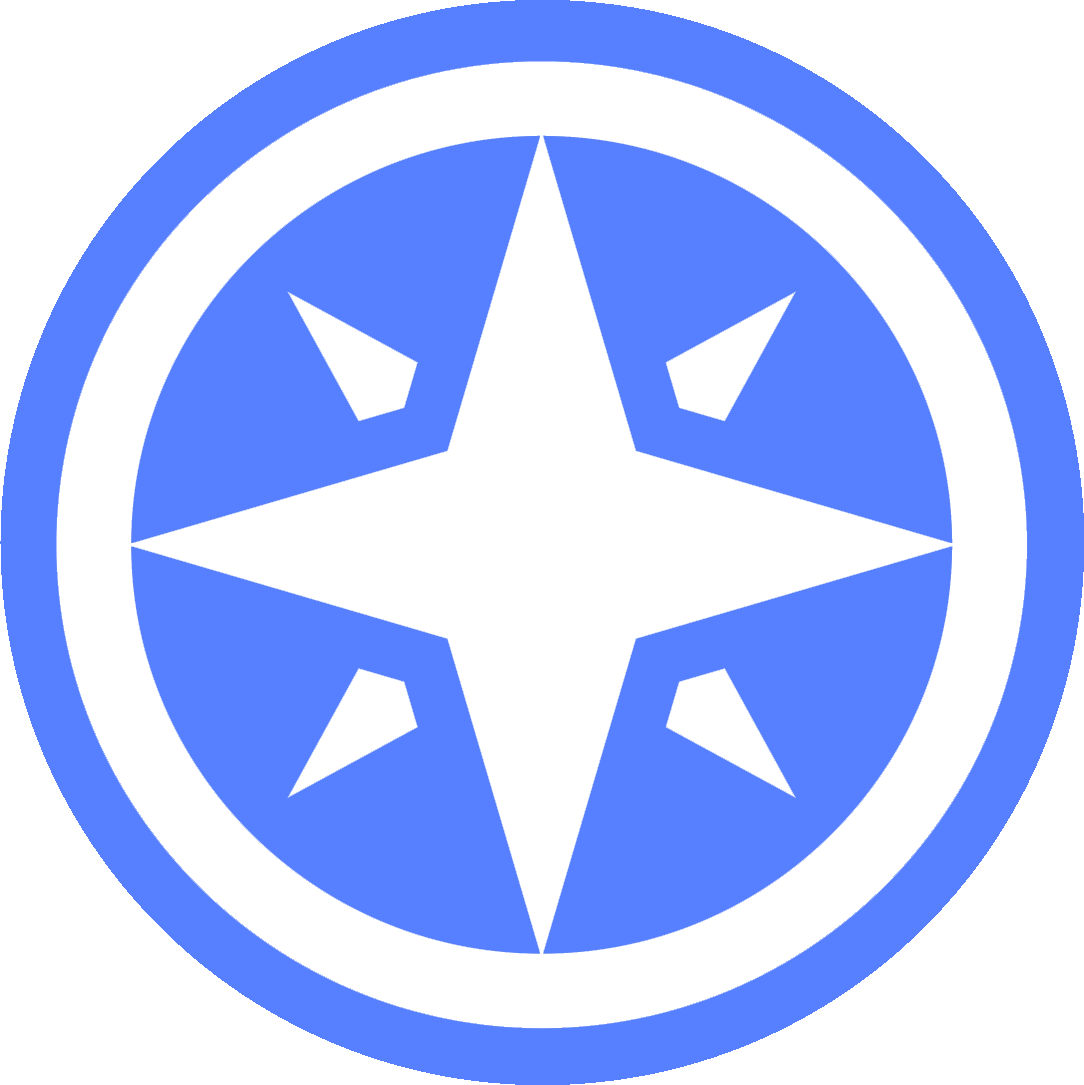 Passport
Passport

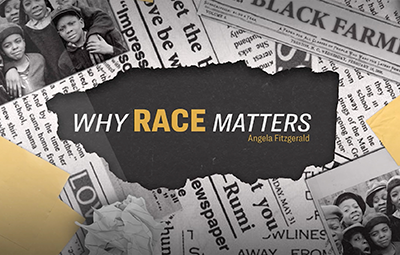

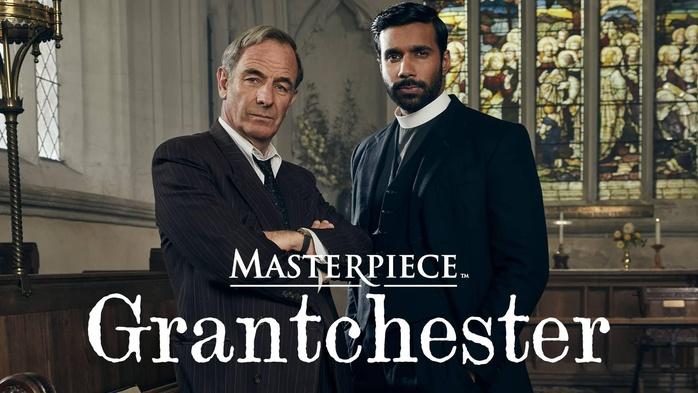



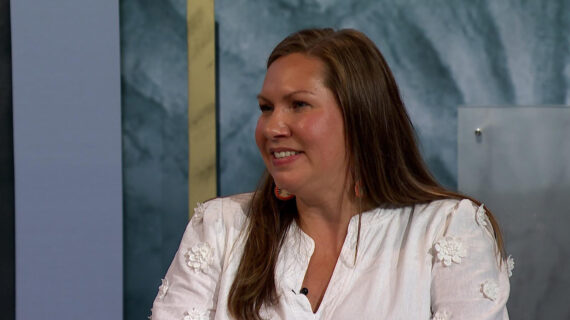
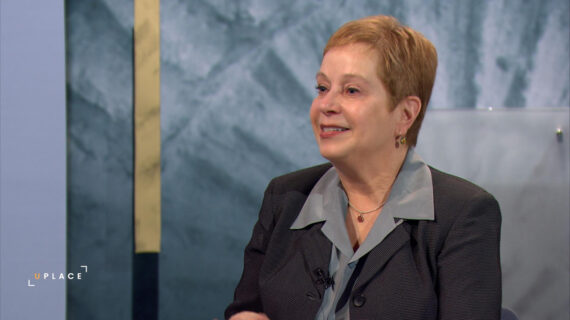

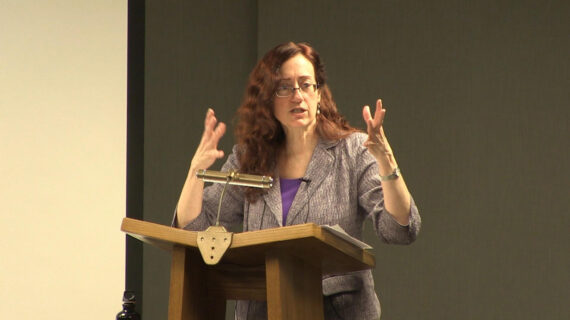

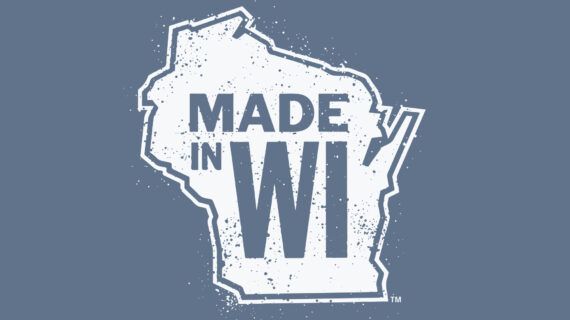

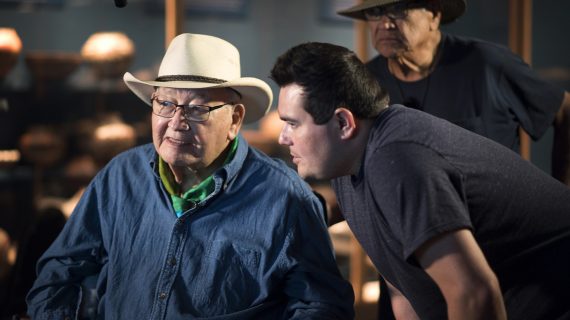



Follow Us